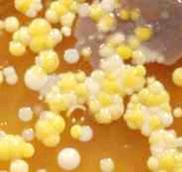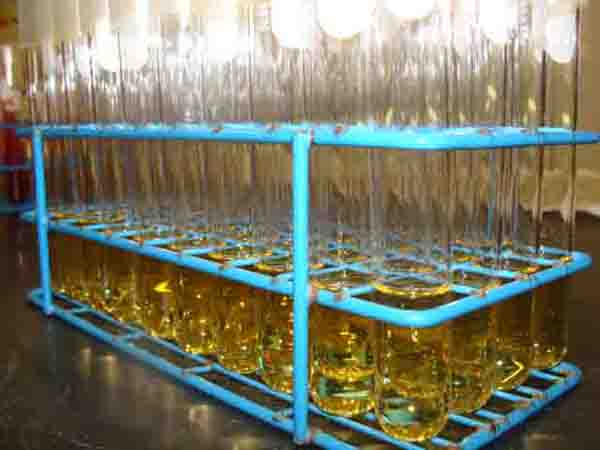 | ||||
Isolating Bacterial Cultures from Clinical Samples - P2
Page last updated
4/2016
SCIENCE PHOTOS
SPO VIRTUAL CLASSROOMS
A bacterial colony is a dot of microbes on the growing medium that arose from a single parent cell, so all the cells in a colony are of the same type. Each colony can then be sampled and cultivated so that all types of bacteria in the sample can ultimately be identified. Identification of the bacteria is accomplished after pure cultures are obtained, by using additional tests.
Streak plating can only be used to grow microbes that can tolerate oxygen, since all cultured microbes in a streak plate grow in the surface of the agar.
Close up of normal flora bacterial colonies of an arm plate sample from skin.
PAGE 2 < Back to Page 1
Pour Plating Isolation Technique
When pour plates are used to isolate bacteria, a sterile liquid growing medium is combined, in a test tube, with material from the clinical sample. Then a small portion of this mixture is put into a second tube of liquid agar, further diluting the clinical sample. The mixture is progressively diluted in this fashion, each time a small amount of liquid from the previous dilution being added to a new tube of sterile liquid growing medium.
Once the clinical sample has been sufficiently diluted, the mixture is poured into a petri dish in combination with warm liquid agar. The agar is a gelling agent, which transforms the mixture into a jello-like solid upon cooling. After incubation, the plate will have separate colonies growing both on the surface and within the agar.
Sources & Resources
- Bauman, R. (2014). Microbiology with Diseases by Taxonomy, 4th ed., Pearson Benjamin Cummings.
- Leboffe, M. J. and Pierce, B. E. (2010) Microbiology Laboratory Theory and Application, Third Edition. Morton Publishing Company.
- Perry, J. and Stanley, J. (1997) Microbiology Dynamics & Diversity. Saunders College Publishing.
- Bacterial Growth Media & Cultures Laboratory Exercise Main Page from the Virtual Microbiology Classroom.
- Streak Plate Procedure animated tutorial from Sinauer Associates.
Liquid growth media that can be used for the serial dilutions required for pour plate bacterial isolation.
 | ||||||
SPO is a FREE science education website. Donations are key in helping us provide this resource with fewer ads.
Please help!
(This donation link uses PayPal on a secure connection.)
You have free access to a large collection of materials used in two college-level introductory microbiology courses (8-week & 16-week). The Virtual Microbiology Classroom provides a wide range of free educational resources including PowerPoint Lectures, Study Guides, Review Questions and Practice Test Questions.




